Palazzo Vecchio: Visit the Palace, Florence & Arnolfo Tower
Home » Palazzo Vecchio
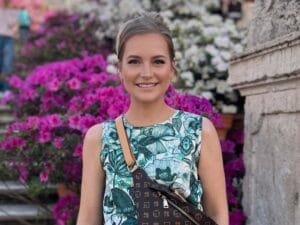
- Updated on
Hey there, fellow wanderlusters! If you’re ever strolling through the charming city of Florence, you absolutely can’t miss the majestic Palazzo Vecchio!
This iconic palace, once the heart of Florentine political life, has a rich history that’ll make your jaw drop. Located in the Piazza della Signoria, it’s a stunning symbol of the city’s past power.
Inside, you’ll find the magnificent Salone dei Cinquecento, where Cosimo de’ Medici once gathered his advisors. It’s decorated with masterpieces by Vasari—such a dreamy spot for history buffs! And let’s not forget the nearby Palazzo Pitti, another must-see for those exploring Florence’s treasures.

Whether gazing at the grand architecture or wandering through its beautiful halls, Palazzo Vecchio is a must-see in this fabulous city. Can’t wait to tell you more about it!
Author

Welcome!
Welcome to Florence Awaits!
My name is Allie.
Italy is one of my favorite countries to visit in Europe, especially Florence!
I love everything the city has to offer. From the architecture to the most delicious food and wine, Florence has it all. So, come with me on this beautiful journey through Florence.
Allie
Best tours, tickets & activities:
Tickets to Palazzo Vecchio > Adults: €12.50 + €1 presale
> EU Citizens aged 18-25: €10.00 + €1
Arnolfo Tower > €10.00 + €1 presale. Get tickets!
> Booking mandatory; arrive 15 minutes prior to visit.
(all ticket prices will vary depending on which tours you book.)
Adress:
Piazza della Signoria, 50122 Firenze, Italy
Transportation:
From Florence Santa Maria Novella Train Station (main station): Walking: 15 min.
Nearby:
Duomo Florence: 7-10 minute walk.
Piazza della Signoria: 0 min
Uffizi Gallery – 2-minute walk.
Ponte Vecchio – 5 minute walk.
Palazzo Pitti: 12-15 minute walk.
Recommended exploration time:
Palazzo Vecchio Museum: 1.5 to 2 hours
Arnolfo Tower: 30-45 minutes (including climb and photos)
Nearby Sights (optional add-ons):
Uffizi: 1.5-2.5 hours
Accademia: 1 hour
Wander nearby squares & Ponte Vecchio: 1-2 hours
Opening hours for Palazzo Vecchio:
Mon-Wed & Fri-Sun: 9AM-7PM
Thur: 9AM-2PM
Arnolfo Tower opening hours:
Mon-Wed & Fri-Sun: 9AM-5PM
Thur: 9AM-2PM
What is Palazzo Vecchio?
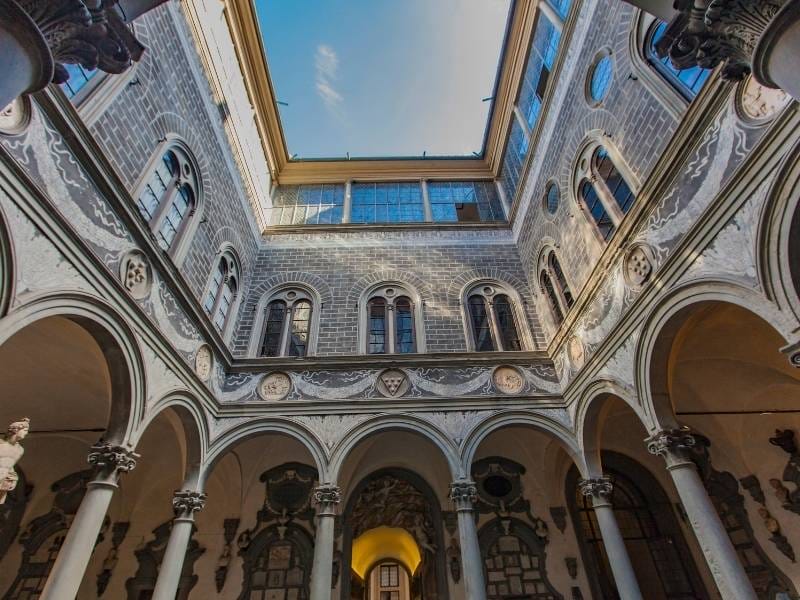
At first glance, the Palazzo Vecchio might seem like another beautiful building in Florence. But trust me, it’s so much more than that. This imposing palace, with its medieval architecture, has served as the center of Florence’s government since the 13th century.
Originally known as the “Palazzo dei Priori,” it was home to Florence’s ruling families, including the famous Medici family. Today, it stands as a museum and is one of the best-preserved Renaissance buildings in Italy.
You might recognize the palace’s striking exterior, with its massive stone walls and a tall clock tower (the Arnolfo Tower), symbolizing Florence’s power and pride. As you stroll through the courtyard, you’re walking through centuries of history, where the Florentines once gathered to make decisions about their city and their future.
What to See When Visiting Palazzo Vecchio
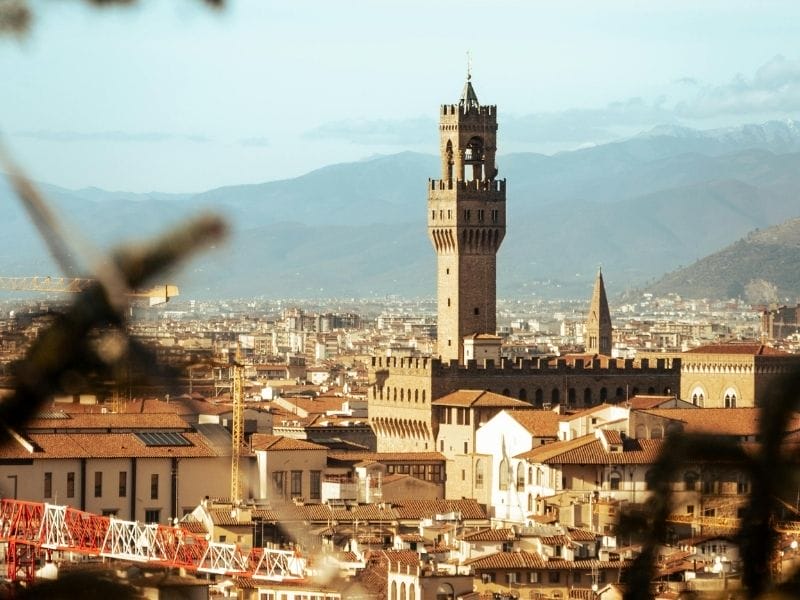
Now that you have a little history under your belt, let’s talk about what to expect when you visit Palazzo Vecchio in Florence! Whether you’re a fan of sculpture, frescoes, or art history, this place is a treasure trove of art and culture. Here are a few highlights that will make your visit unforgettable.
The Salone dei Cinquecento (Hall of the Five Hundred)
If there’s one room in the palace that will take your breath away, it’s the Salone dei Cinquecento. This grand hall, named after the 500 members of Florence’s government, is an absolute masterpiece. The room is adorned with magnificent frescoes by Vasari, telling stories of Florence’s glorious past. The ceiling, painted with vivid scenes from the city’s history, will make you feel like you’ve stepped into a Renaissance dream. Don’t forget to look at the impressive sculptures by Michelangelo and Bronzino that stand tall in the room. They add to the majestic atmosphere of this historical space.
The Arnolfo Tower and the Breathtaking View of Florence
One of the best parts of visiting Palazzo Vecchio is climbing the Arnolfo Tower. At 94 meters high, this bell tower gives you an unbeatable view of the city! From the top, you can see the iconic Duomo in all its glory, the Arno River winding through the city, and even the lush Boboli Gardens in the distance. It’s the perfect spot for taking photos and admiring Florence’s stunning architecture. Trust me, it’s a must-do if you’re visiting Florence!
The Courtyard and Sculptures
As you wander through the courtyard, you’ll encounter some of the most famous sculptures in Italy. One of the most notable is a replica of Michelangelo’s David, which stands proudly in the Loggia dei Lanzi. The courtyard itself is filled with artwork and statues, creating a tranquil space where you can soak in the beauty of your surroundings.
If you’re a fan of sculpture, this is the perfect place to pause and appreciate the artistry that surrounds you. Keep an eye out for statues by Donatello and Giambologna, which reflect Florence’s rich artistic heritage.
The Frescos and the Vasari Corridor
If you’re fascinated by frescoes, you’ll be in art heaven at Palazzo Vecchio. The Vasari frescoes are among the finest examples of Italian Renaissance art. These stunning artworks decorate the palace walls, telling tales of Florence’s glory days. You can also explore the Vasari Corridor, an art lover’s dream come true! Initially used by the Medici family, the corridor now showcases a fascinating collection of paintings.
The Vasari Corridor connects Palazzo Vecchio to the Uffizi Gallery, another highlight of Florence that you definitely don’t want to miss. It’s a unique and historical space that lets you literally walk through the past as you journey through Florence’s artistic legacy.
Palazzo Vecchio's Rich History

The story of Palazzo Vecchio begins with Arnolfo di Cambio, the architect who designed the building in 1299. Arnolfo’s vision was to create a palace that not only served as the seat of government but also symbolized Florence’s strength and independence. The palace was intended to be a place of political power and authority, a fortress against the political turmoil of the time.
Fast forward a few centuries, and the Medici family took over the palace. Cosimo I de Medici, one of the most powerful rulers of Florence, made Palazzo Vecchio his residence in 1540. This is where Vasari, the famed artist and architect, came in.
He was commissioned to decorate the grand halls, including the stunning Salone dei Cinquecento, or “Hall of the Five Hundred.” His frescoes and works have become one of the hallmarks of the Italian Renaissance and make visiting Palazzo Vecchio a journey through art history.
The Medici and the Transformation
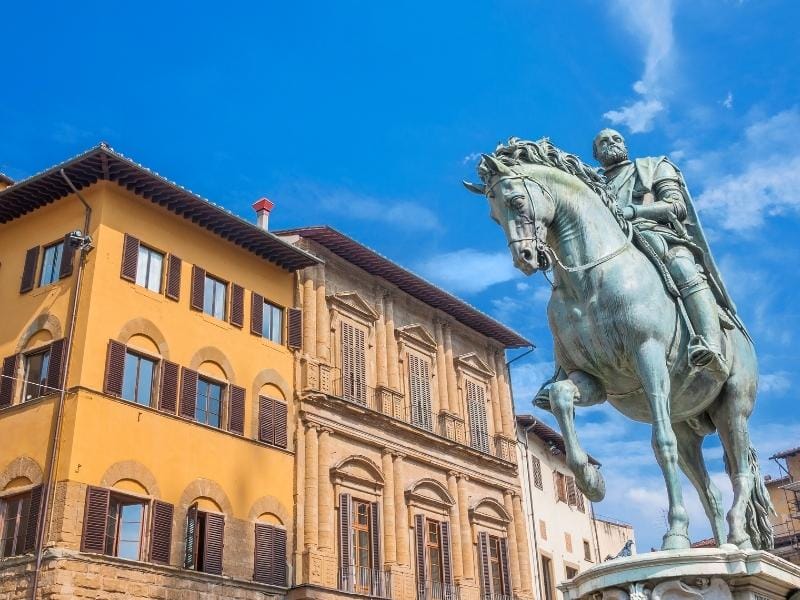
Under the Medici family, Palazzo Vecchio underwent a major transformation. Cosimo I de Medici moved his government operations here, and the palace became not just a symbol of power, but also a magnificent residence for his family.
As a patron of the arts, Cosimo invited renowned artists and architects, including Vasari, to transform the palace into a stunning showcase of Renaissance art.
Cosimo’s reign also marked the beginning of the Vasari Corridor—a secret passageway that connected Palazzo Vecchio to the Uffizi Gallery and eventually led to the Palazzo Pitti.
This corridor allowed the Medici family to travel between their residences without stepping outside, maintaining both privacy and security. Today, this corridor is a fascinating part of the palace that you can explore on your visit!
Florence's Government and Savonarola's Role
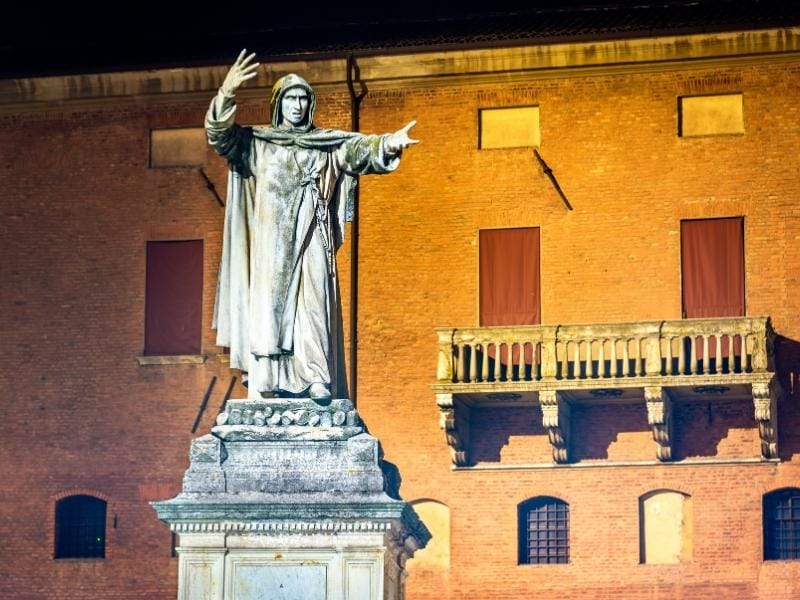
If you’re interested in Florence’s political history, Palazzo Vecchio is where you’ll get an inside look at the city’s governance. During the Renaissance, the building was at the heart of Florence’s political life, housing the Florentine Republic’s offices and serving as the seat of government for centuries.
Savonarola, the fiery Dominican friar, once stood at the center of Florence’s political and religious life, even holding sway over the government for a brief period. His influence on the city during this turbulent time is part of what makes Palazzo Vecchio such an important historical site.
Additional Fun Facts About Palazzo Vecchio
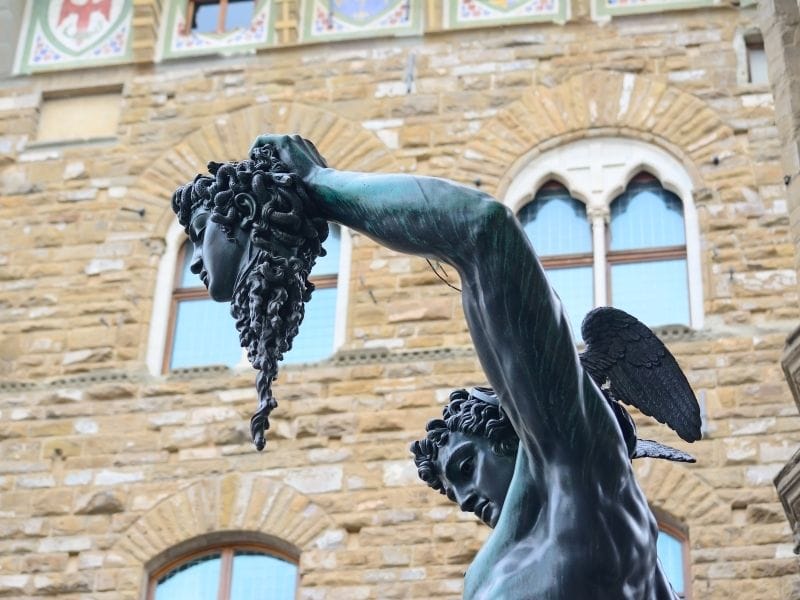
The palace was once home to the Guilds of Florence, influential organizations that controlled much of the city’s economy.
You’ll find that Palazzo Vecchio also has connections to Dan Brown’s novel Inferno, as key scenes take place in this very building. It’s fun to think about the mysteries and secrets hidden within these walls!
Don’t forget to explore the nearby Loggia dei Lanzi, an open-air sculpture gallery located just outside the palace. It’s a great place to take in more art after visiting Palazzo Vecchio.
Why You Must Visit Palazzo Vecchio in Florence
Visiting Palazzo Vecchio in Florence is an unforgettable experience. From the grand Salone dei Cinquecento to the dizzying heights of the Arnolfo Tower, this historic palace offers something for everyone.
Whether you’re marveling at the frescoes, soaking in the view of the Duomo, or learning about the Medici family’s rule over Florence, you’ll feel like you’ve stepped back in time. The blend of art, history, and stunning architecture makes Palazzo Vecchio a must-see on any trip to Florence.
So, pack your bags, grab your camera, and get ready to explore this incredible piece of Florence’s past. Buon viaggio and happy exploring!
Tickets & Führungen
FAQ
Is Palazzo Vecchio family-friendly?
Yes! There are interactive exhibits, kid-friendly guided tours, and scavenger hunts designed for children.
How difficult is the Arnolfo Tower climb?
The climb is moderate to challenging with over 400 steps and no elevator. It’s not suitable for people with reduced mobility or small children in strollers.
Is photography allowed inside?
Yes, non-flash photography is generally allowed for personal use. Tripods and selfie sticks may be restricted.
Is there Wi-Fi inside Palazzo Vecchio?
Some parts of the museum may have free public Wi-Fi, but coverage is limited. It’s best to check with staff on arrival.
What should I see inside Palazzo Vecchio?
Salone dei Cinquecento (Hall of the Five Hundred)
Vasari frescoes & ceiling art
Michelangelo and Donatello sculptures
Medici apartments
Arnolfo Tower for panoramic views
Do I need to book in advance?
Yes, advance booking is highly recommended—especially for the Arnolfo Tower, which has limited daily capacity.
What’s the best time to visit?
Early morning to avoid crowds
Late afternoon for stunning sunset views from the tower
Weekdays are less busy than weekends
Be sure to also check out:
